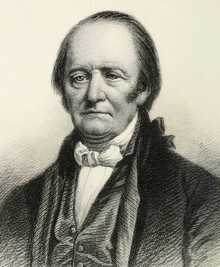Thomas Chittenden | |
|---|---|
 Governor Thomas Chittenden (presumed likeness) | |
| 1st Governor of Vermont | |
| In office March 5, 1791 – August 25, 1797 | |
| Lieutenant | Paul Brigham |
| Preceded by | Himself (as Governor of the Vermont Republic) |
| Succeeded by | Paul Brigham |
| 1st & 3rd Governor of the Vermont Republic | |
| In office October 20, 1790 – March 4, 1791 | |
| Lieutenant | Peter Olcott |
| Preceded by | Moses Robinson |
| Succeeded by | Himself (as Governor of the State of Vermont) |
| In office March 13, 1778 – October 13, 1789 | |
| Lieutenant | Joseph Marsh |
| Preceded by | None |
| Succeeded by | Moses Robinson |
| Member of the Connecticut Colonial Assembly | |
| In office 1765–1769 | |
| Personal details | |
| Born | January 6, 1730 East Guilford, Colony of Connecticut, British America |
| Died | August 25, 1797 (aged 67) Williston, Vermont, U.S. |
| Resting place | Thomas Chittenden Cemetery, Williston, Vermont |
| Political party | None |
| Spouse | Elizabeth Meigs Chittenden (m. 1749–1797, his death) |
| Children | 10, including Martin |
| Signature | |
Thomas Chittenden (January 6, 1730 – August 25, 1797) was an American politician from Vermont, who was a leader of the territory for nearly two decades. He was the state's first and third governor, serving from 1778 to 1789—when it was a largely unrecognized independent state called the Vermont Republic—and again from 1790 until his death. Vermont was admitted to the Union in 1791 as its 14th state.